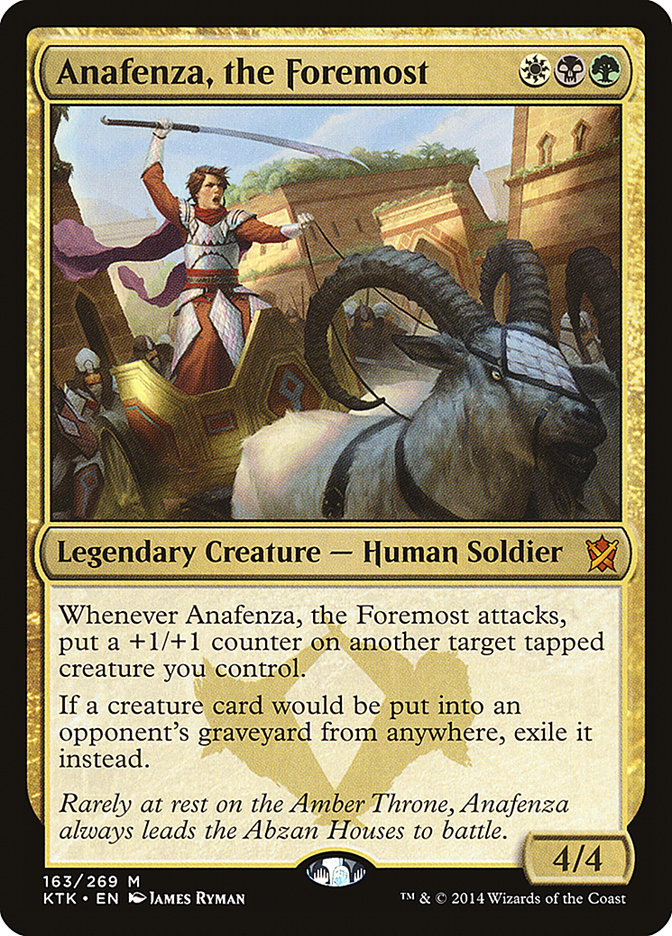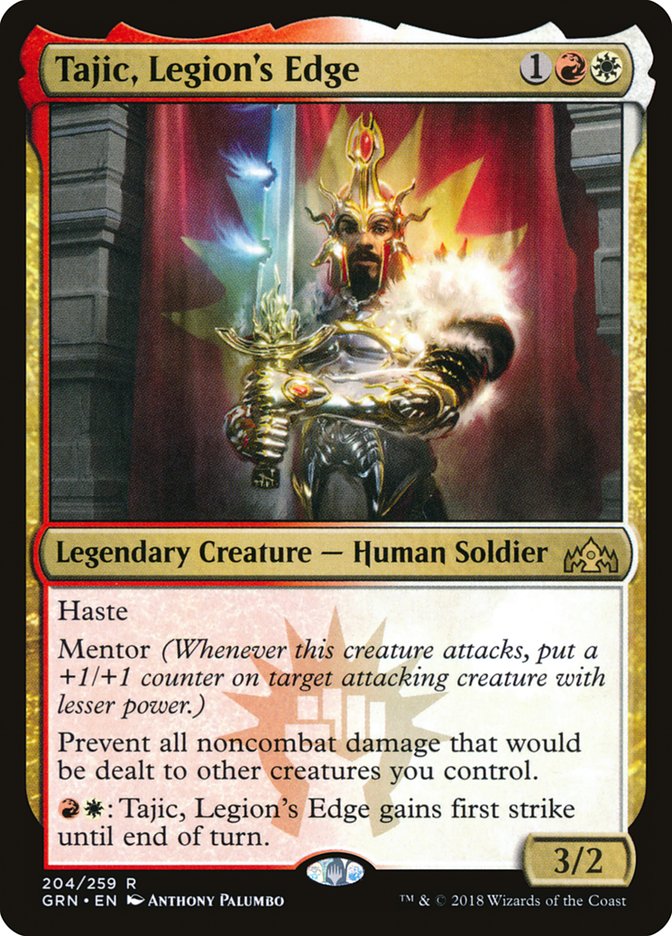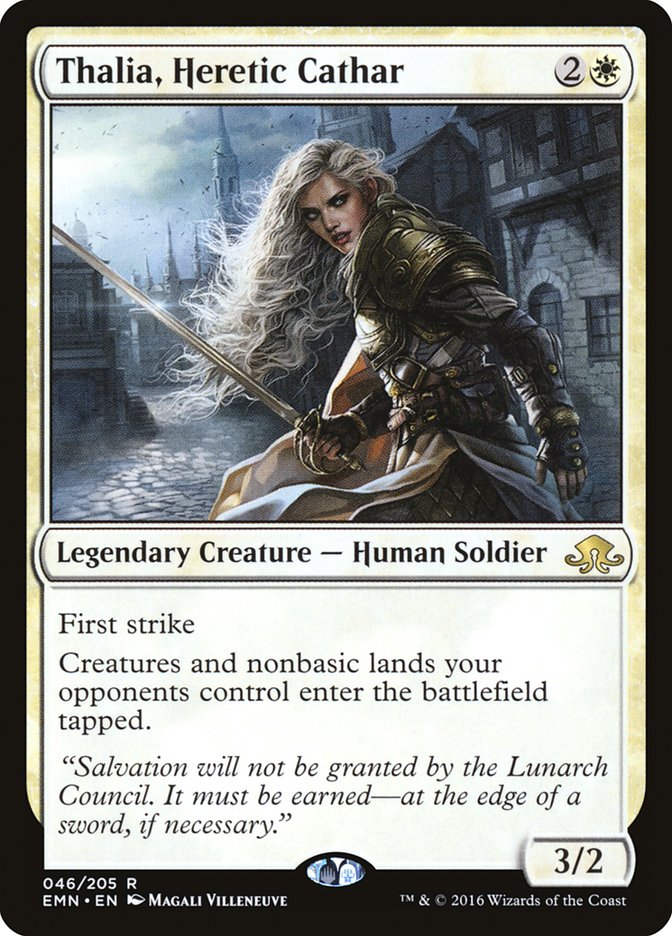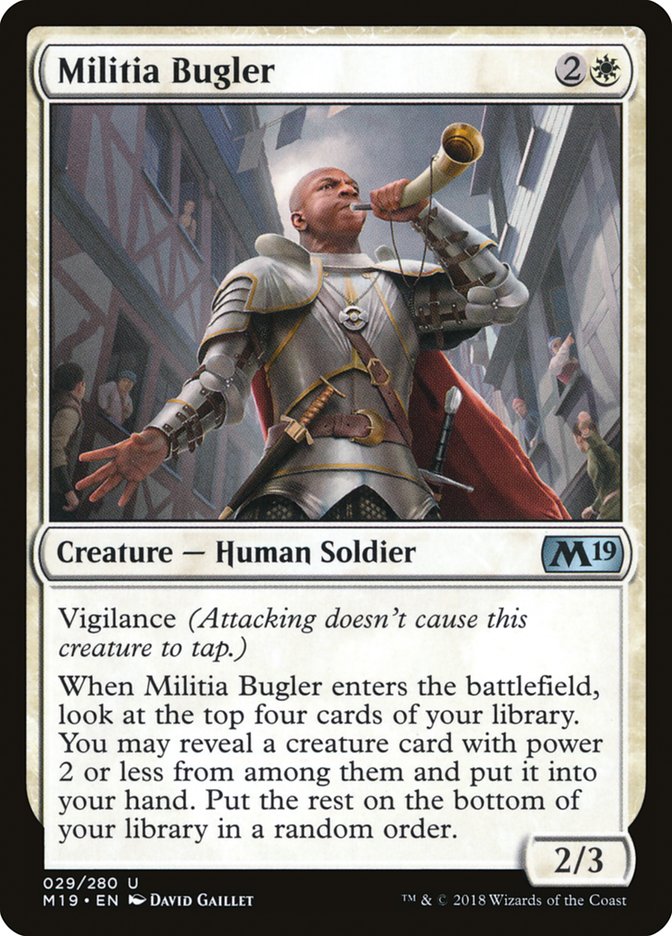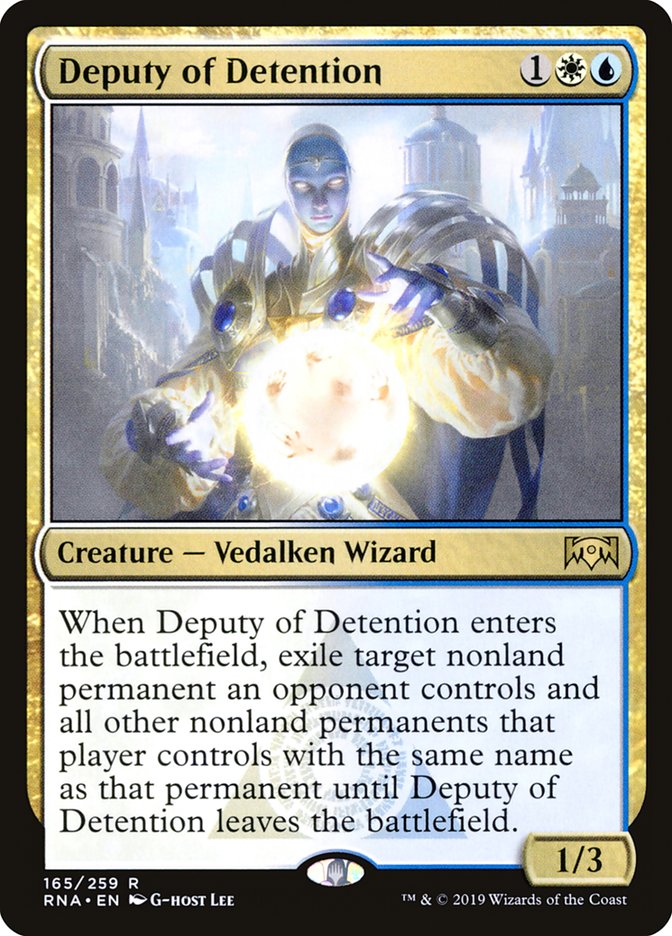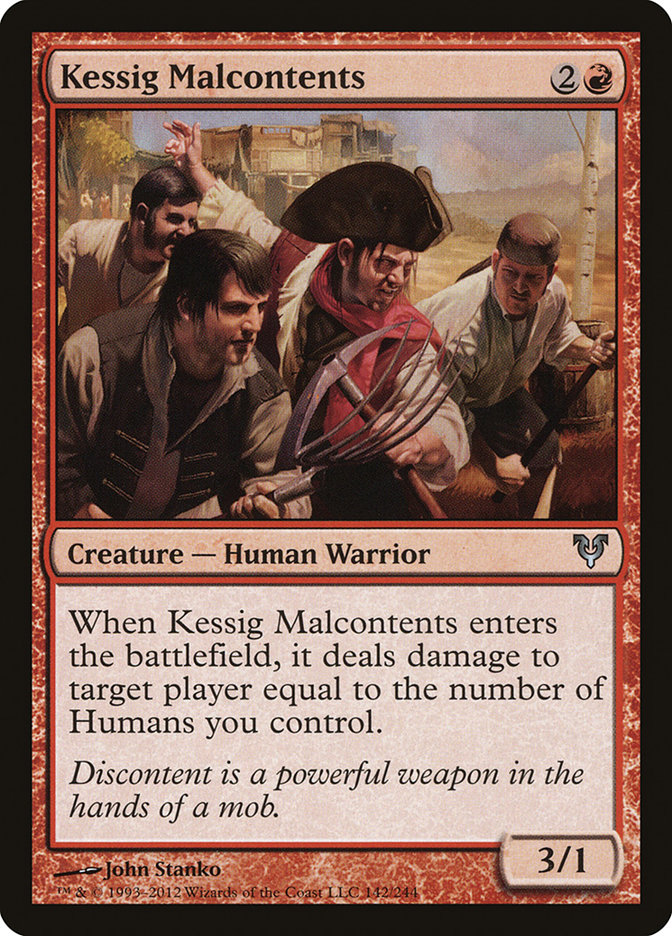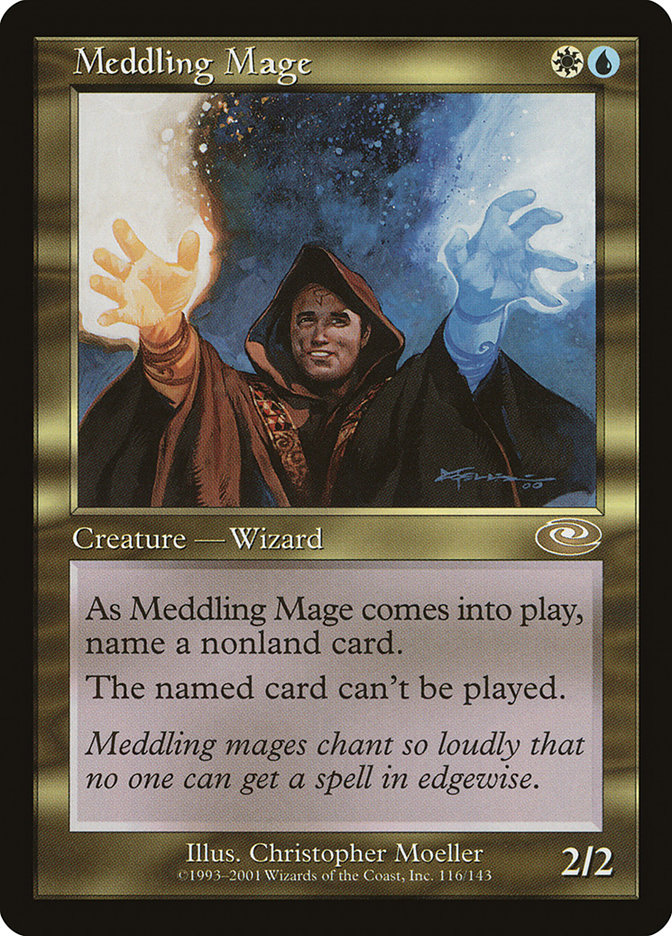At Mythic Championship London, Humans was one of the three most popular decks in the room. Generally, decks with that level of popularity do not perform well, primarily because popularity puts a target on its back and attracts a wealth of inexperienced pilots. Humans nonetheless boasted one of the highest win rates in the field and ultimately earned Eli Loveman the trophy. For that specific tournament, I believe Humans was the best deck in the room, and it was my weapon of choice as well.
Since then, a lot has changed in Modern, but Humans remains one of the best possible options. Humans has been around long enough that most people are familiar with the basic mechanisms of the deck. Thus, in this article I will focus on what I see as the hard parts of constructing and piloting the deck to prepare you for SCG Louisville this weekend.
Decision Point: The Three-Drop
When you decide to play Humans in a tournament, most of the slots in your maindeck are locked in. At this point, nobody is seriously debating if the deck should play Collected Company or whether the Cavern of Souls / Unclaimed Territory manabase is worth it. Among the few slots in the deck still up for debate are the last two three-drops. Nobody plays fewer than four copies of Mantis Rider or Reflector Mage, but the last two slots are randomly selected three-mana Humans.
Option One: Anafenza, the Foremost
Anafenza is a hideously effective Dredge hate card that also annoys Arclight Phoenixes and comes strapped to a body big enough to survive Lightning Bolt. When the graveyard is irrelevant, the card falls back on its high floor: three mana, four power, four toughness. Even against non-interactive spell decks, Anafenza will end things in a hurry.
If Anafenza were not legendary, I would recommend playing two in a lot of metagames. But the supertype is a huge downside in Humans because the deck plays four copies of Phantasmal Image and sideboards them out infrequently, if ever. You really don’t want to end up in the position of copying your one-drops; thus, you want every three-drop slot in the deck to be a good Image target. I recommend maindecking one copy of Anafenza when you expect Dredge and Izzet Phoenix to be popular, and zero copies more often than not.
Option Two: Tajic, Legion’s Edge
This card is similar to Anafenza in that it has reasonable base stats and a static ability that is good against Dredge and Izzet Phoenix. The main downsides are that the 3/2 body often dies in combat and blanking Conflagrate is far weaker against Dredge than exiling creatures. In summary, Tajic has a lower ceiling and a lower floor than the Abzan chieftain. Do not play this card.
Option Three: Thalia, Heretic Cathar
Thalia is a high-variance card. Frequently, it can feel broken on the play and textless on the draw. For instance, slamming a Turn 3 Heretic Cathar on the play against Tron often means their sweeper is delayed until Turn 5. If Humans has a reasonably fast draw, they’ll be dead by then, making the card among the best in the deck. On the draw, they’ll usually already have enough mana untapped to operate, rendering Thalia completely irrelevant.
I think the card plays out similarly in the mirror, against Dredge, and in a variety of other matchups. Because the card comes out on the draw so frequently, I have found that it puts a huge strain on your sideboard. Between that and the legendary downside, I typically do not recommend playing this card.
Option Four: Militia Bugler
To Cedric’s great dismay, people continue to maindeck Militia Bugler in 2019. The card is grindy in a way that is effective in a wide swath of matchups, allowing you to dig for Meddling Mage against Ensnaring Bridge decks, Thalia’s Lieutenant when you need a blistering clock, or Reflector Mage to answer a large Death’s Shadow. Unlike all the previous options, the card also synergizes very well with Phantasmal Image. In matchups where Bugler is good, typically the best things you can find are more Buglers.
The biggest problem with the card is that when it’s bad, it tends to be very bad. For instance, against Tron you need every card to either keep them off balance or end the game before they recover. A three-drop that does neither is simply unacceptable. Overall, I think Bugler is usually a 7/10 but sometimes a 1/10. Thus, I would maindeck it if, and only if, non-interactive combo isn’t very popular. However, because it’s above-average against so many different decks, I would rarely exclude Bugler from my sideboard.
Option Five: Deputy of Detention
Deputy of Detention is the card I would play in the two three-drop slots if I had a tournament tomorrow. While the card may seem at odds with the deck’s core strategy, it’s simply good versus every popular deck right now. Against Izzet Phoenix, it can clear multiple Phoenixes out of the way or exile Thing in the Ice. Deputy won’t typically live long in that matchup, but getting in one hit on a clear battlefield or resetting Thing in the Ice’s counters is often invaluable.
Against Dredge, Deputy will frequently exile three or four creatures at once, and it’s the best of all reasonable three-drops in the mirror and against Ensnaring Bridge decks. Even control decks these days have large numbers of planeswalkers in addition to Search for Azcanta, ensuring that you will always have at least a medium target.
While I can imagine metagames full of spell-based combo decks where Deputy would be awful, these decks simply are not a large part of Modern right now. The biggest downside of the card is that it’s slightly hard to cast, but between Ancient Ziggurat, Aether Vial, Noble Hierarch, and just naming Wizard with Cavern of Souls / Unclaimed Territory, I’ve found that downside to be manageable.
Option Six: Kessig Malcontents
Kessig Malcontents was one of the last cards I cut from my deck in preparation for Mythic Championship London. It is surprisingly effective at helping to race decks like Tron and Dredge in Game 1 and can help finish off Izzet Phoenix players after they stabilize behind a wall of recursive 3/2s. The trigger generally does enough damage to be meaningful against fair decks like Golgari Midrange and control and it forces Whir Prison to assemble one more piece.
The biggest problem with Kessig Malcontents is that Humans frequently transforms into a lock deck after sideboard. While I love having the card against Tron and Dredge in Game 1, it feels underwhelming in those same matchups for Games 2 and 3. Against these decks, Humans will often push the game very late and lock out all of the opponent’s relevant plays, only then killing with whatever random bodies it has lying around. While turning the corner hard can allow a softer lock to succeed, I’ve found this is typically not needed. I’m leaving Malcontents on the bench for now, but it’s the card I would be inclined to register if non-interactive decks pushed Deputy back into the sideboard.
Decision Point: Naming a Creature Type
Cavern of Souls and Unclaimed Territory are the glue that hold the Humans manabase together. Usually, these lands should name Human, but it’s important to be aware that they do not have to.
When considering what to name, be aware of the following cards: Mantis Rider, Phantasmal Image, and Deputy of Detention. Your goal is to always be able to cast all three of these cards. Often, however, you will have to lock yourself out of casting some of them. Here are my general guidelines for deciding whether to name Human, Illusion, or Wizard in those spots:
- If you have an Aether Vial on the battlefield, you should prioritize Mantis Rider or Deputy of Detention above Phantasmal Image. This is because you will often leave your Vial at two counters, and being unable to get your three-drop onto the battlefield for a turn is often the difference between winning and losing. If you know you will be ticking up your Vial to three in short order anyway, the priority flips and Illusion is often the correct choice.
- If only one of the competing cards is in your hand, you should almost always name the type of that card, and just hope to draw the colors you need by the time you draw the others. If the only other land you control is a Horizon Canopy or Plains, you should name Human in order to help you cast Mantis Rider and Kitesail Freebooter.
- If none of the above conditions apply, I typically assume Phantasmal Image will work itself out and prioritize whichever three-drop I have more copies of remaining of in my deck. This will most often be Mantis Rider but can change depending on what you have drawn and how you sideboarded.
- If my lands can currently cast Mantis Rider and Deputy of Detention but not Phantasmal Image, and I control a Horizon Canopy that I have a high chance of cycling in the next few turns, taking me off one or both of those cards, I’ll use the above guidelines as though I did not control said Canopy.
Decision Point: Meddling Mage
The single most challenging card to resolve in all of Humans is the blind Meddling Mage and I could devote an article to describing the intricacies of this one card. That said, here’s the CliffsNotes version:
If your opponent is playing a deck that has few or no ways to remove Meddling Mage, name the best four-of proactive card that would still be in their hand at this point. If your opponent is playing a reactive deck, name a spot-removal spell they have four of. If your opponent is playing a proactive deck with three or more copies of a spot-removal spell, you typically want to name the spot-removal spell. This is because, regardless of which you name, they’ll get to cast their proactive spell. However, if you name the removal spell, at least you keep your 2/2 body and lock out any future copies they draw of that removal spell.
The exception to the above rule is when delaying their proactive spell for a few turns will provide significant value. For example, let’s say you start on Champion of the Parish, and your opponent casts Turn 2 Thing in the Ice. In this spot, you should usually name Manamorphose with your Meddling Mage to make it very unlikely that Thing in the Ice transforms next turn. Then, on your Turn 3, you can reset Thing in the Ice with Reflector Mage or Deputy of Detention regardless of if they Lightning Bolt Meddling Mage. Note that if I had the same draw on the play, I would simply name Lightning Bolt, since I would be guaranteed enough time to answer a potential Thing in the Ice before it transformed.
Be aware that, in the mirror, Meddling Mage is symmetrical. Thus, it’s frequently right to name cards not in your deck that might be in theirs in the early-game. If you’re playing a list with two Deputy of Detention, Militia Bugler and Thalia, Heretic Cathar are usually where I start. I recommend this strategy because naming any generically high-impact card in the early game is roughly as likely to hurt you as it is to hurt them.
As the game takes shape, you want to look for cards that are much better for them than they are for you. For instance, if you have a large Champion of the Parish but they just have a bunch of 3/3s due to Thalia’s Lieutenant, name Reflector Mage, since bouncing your Champion would be much more impactful than bouncing any one of theirs. If they control Izzet Staticaster and you don’t, then Phantasmal Image might be a good choice. Additionally, be aware that, since Aether Vial gets around Meddling Mage and it can only tick up, you should usually name a card with CMC less than the number of counters on your opponent’s Vial if they have one.
When you write out your sideboard plans with Humans before a major tournament, I suggest including the “default” Meddling Mage selection for each major matchup. But be aware that determining what cards make sense to still be in your opponent’s hand is an important part of getting the most out of Meddling Mage, and thus the ability to improvise and utilize context clues will get allow you to get even more out of the card.
Armed with the knowledge in this article, the hard decisions in Humans should seem just a little easier. But close decisions in Magic can be very challenging, so don’t beat yourself up about a wrong call here or there.
At the end of the day, we’re all only human.


